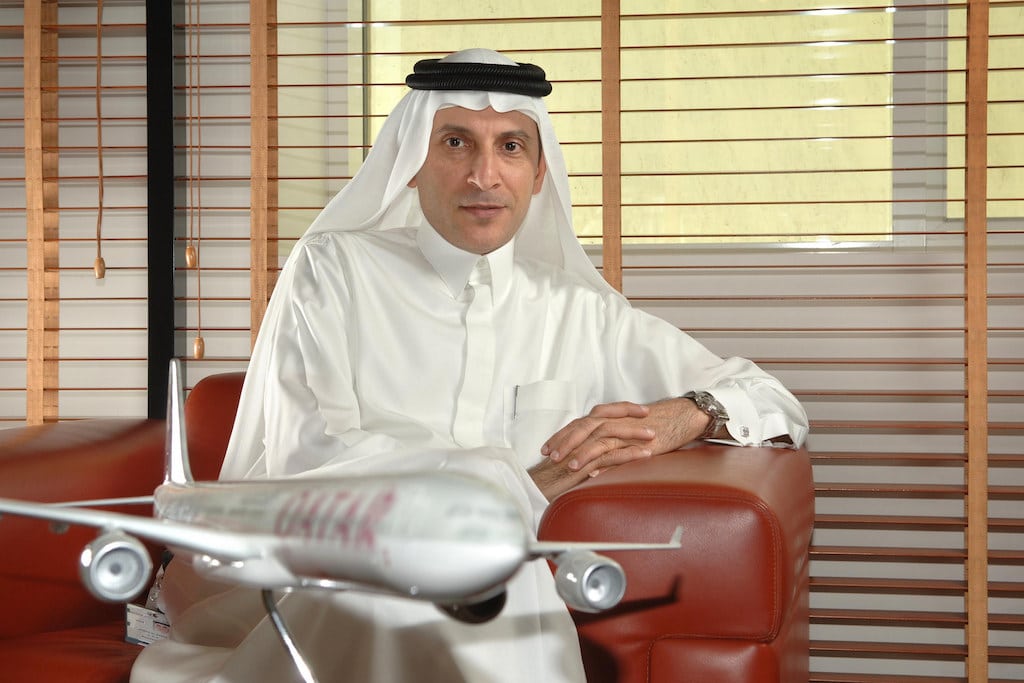Skift Take
Gulf carriers may be the new kids on the block, pulling out all stops to attract and keep new flyers, but they're also setting new standards for service and comfort, which others will have to mimic or risk being considered obsolete.
Middle Eastern airlines including Qatar Airways, Emirates and Etihad Airways are giving stalwart U.S. and European carriers good reason to rethink their futures.
Middle Eastern airlines had the strongest traffic growth for the first 11 months of 2014 at 11.7 percent, according to IATA’s latest statistics, and they continue to introduce improved business class products that woo the highest-paying customers away from older carriers.
Qatar Airways CEO Akbar Al Baker, when asked which U.S. and European carriers he thinks are doing a good job, responded by positioning them as old shop keepers that needed to be caught up with rather than dismissed.
“We have a different business model,” Al Baker told Skift. “We are more oriented towards quality because we are new in the business. They’ve been in business for more than 50 years and we’ve only been in business for 15 years. We have a lot to catch up on so they should not worry about us the way that they are. They are growing, but their growth is not as much as ours because their network is already stabilized. We are growing and there will be a time when our growth will the same as them. Our network will mature and we will grow at 3 or 4 percent a year as compared to 30 percent now.”
“It is like you open a shop and there’s a neighbor who is already established. Everybody knows him so they mostly go there. You have to do something different for people to come to your shop. We attract customers by giving them a ‘wow’ product.”
European and U.S. carriers maintained higher load factors than the quickly growing Middle Eastern carriers for the first 11 months of 2014.
European carriers notched the highest load factor at 77.7 percent followed closely by U.S. carriers with a load factor of 76.8 percent. Middle East carriers’ load factor sat at 70.1 percent, according to IATA data.
Al Baker focuses on the carrier’s potential for growth given the hub’s location.
“We are connecting you to a population that is five times the total population of the United States and Europe put together. We are in a position where we can connect more than half of the world’s population within a five-hour radius of Qatar. There will be more flights and more frequency to the same destination,” he says.
Al Baker as CEO
Al Baker is known as an executive, openly discussing his support for automatic flight tracking, the importance of business class, and global competition.
When asked about his personal challenges in his high-profile role, Al Baker thinks for a moment before responding.
“To grow my airline, always be the best, to provide the quality and services that my countrymen require and my passengers need, and to keep up the reputation of my country in this industry,” he says.
Rather than reflect on how his long-term strategy has changed since joining the company almost 20 years ago, he says he creates a new one every morning.
“My strategy changes every morning that I wake up because there is always something new. It puts a lot of pressure on staff to deliver on that vision. People enjoy it. Professional people who like challenges love this.”
The Daily Newsletter
Our daily coverage of the global travel industry. Written by editors and analysts from across Skift’s brands.
Have a confidential tip for Skift? Get in touch
Tags: ceo interviews, qatar airways
Photo credit: Qatar Airways CEO Akbar Al Baker. Qatar Airways / Flickr
